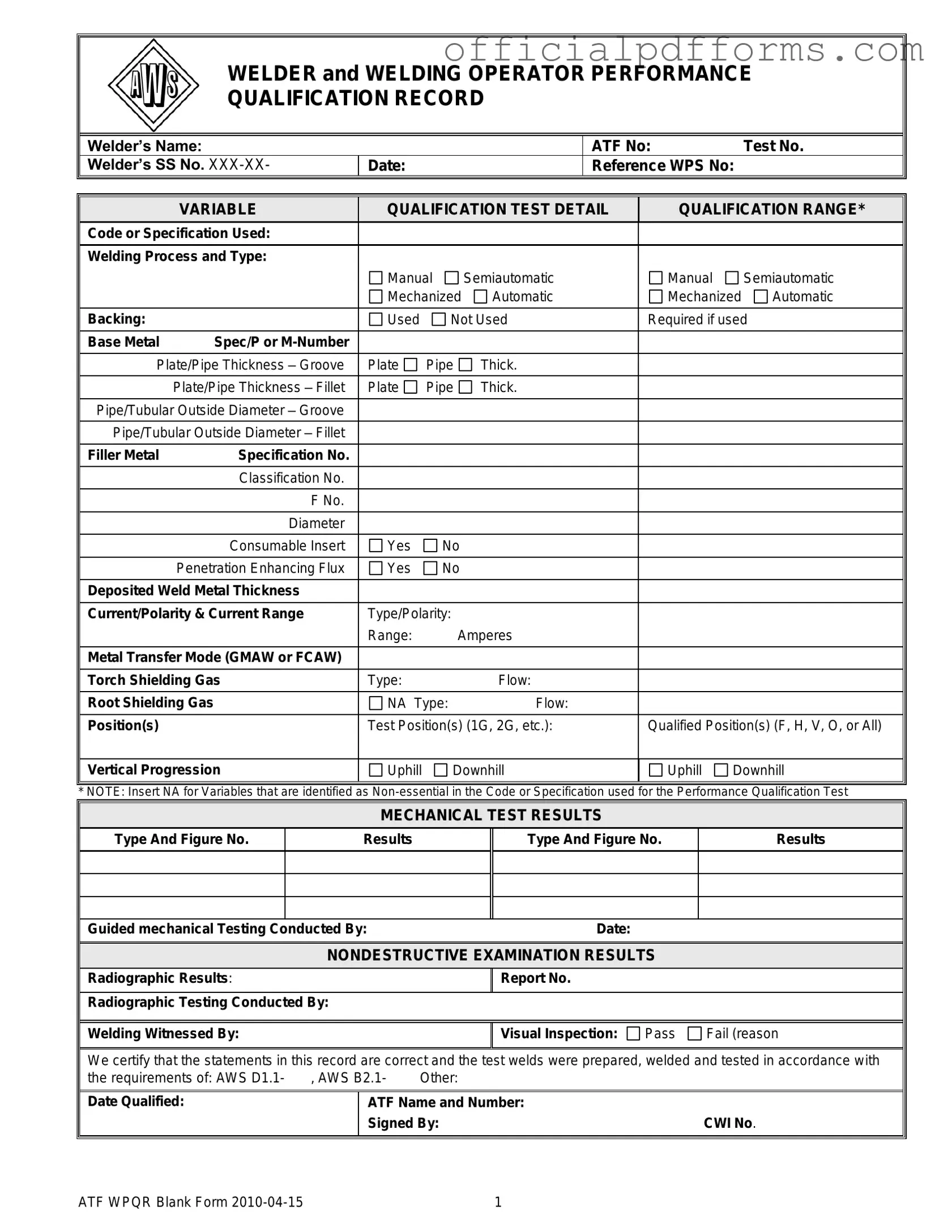The Welder Performance Qualification Record serves as a formal documentation of a welder's skills and capabilities. It verifies that the welder has successfully completed tests according to specific codes and standards, demonstrating their ability to produce quality welds in various conditions. This record is essential for employers and regulatory bodies to ensure compliance with industry standards.
Who needs to complete a WPQR?
Any welder or welding operator who wishes to validate their skills and qualifications must complete a WPQR. This includes individuals working in various industries such as construction, manufacturing, and repair. Employers may also require this documentation to ensure that their workforce meets the necessary qualifications for specific projects.
The WPQR contains several critical pieces of information, including:
-
Welder's name and identification numbers
-
Details about the welding process and materials used
-
Test results, including mechanical and non-destructive examination outcomes
-
Certification and signatures from qualified inspectors
This comprehensive information helps to establish the welder's qualifications and the conditions under which they were tested.
How is the WPQR validated?
The WPQR is validated through a series of tests that the welder must successfully complete. These tests are conducted by certified personnel and may include both mechanical testing and non-destructive examination. The results are recorded in the WPQR, and the document must be signed by a Certified Welding Inspector (CWI) to confirm its accuracy and compliance with applicable standards.
What types of welding processes are covered by the WPQR?
The WPQR covers various welding processes, including:
-
Manual
-
Semi-automatic
-
Mechanized
-
Automatic
Each of these processes may have specific requirements and qualifications that must be documented in the WPQR.
What are the qualifications for different welding positions?
Welding positions are categorized based on the orientation of the weld joint. Common positions include:
-
Flat (1G)
-
Horizontal (2G)
-
Vertical (3G)
-
Overhead (4G)
Each position requires specific skills, and the WPQR will indicate which positions the welder is qualified to perform.
What is the significance of non-destructive examination results in the WPQR?
Non-destructive examination (NDE) results are crucial as they assess the quality and integrity of the welds without damaging them. Common NDE methods include radiographic testing and visual inspection. A pass or fail result in these examinations can significantly impact the validity of the WPQR and the welder's qualifications.
How long is a WPQR valid?
The validity of a WPQR can vary depending on the specific industry standards and regulations. Generally, a WPQR remains valid as long as the welder continues to work in the field and maintains their skills. However, periodic requalification may be required, especially if there is a significant gap in welding activity or if the welder changes processes or materials.
WPQR forms can typically be obtained from industry associations, training organizations, or directly from the companies that require them. Many organizations also provide downloadable templates online. Ensure that the form you use complies with the relevant codes and standards for your specific industry.
